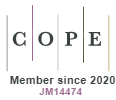Conceptual Model for Six Sigma Project Portfolio Management
DOI:
https://doi.org/10.5585/gep.v1i2.13Keywords:
Six Sigma, Project Portfolio Management, Project SelectionAbstract
Six Sigma has been used for many organizations around the world and significant benefits havebeen reported in relation to productivity and quality improvement, process lead time reduction andcost avoidance for critical processes. In this context one of the most relevant questions is related tothe way Six Sigma projects have been selected and prioritized. It seems to be a not very wellexplored issue by industries and the consequences of not using a robust approach for this task canbe very negative, once “visible” problems tends to decrease or disappear by time. So, this articlepresents a proposal for a Conceptual Model for Six Sigma Project Portfolio Management mainlybased on literature. This model is part of an “on going” academic work and will be used as mainreference for future field researches, investigating the Six Sigma Project Portfolio Management in Brazilian automotive industries.References
Antony, J. (2007). Is Six Sigma a management fad or fact? Assembly Automation, 27(1), 17-19. http://dx.doi.org/10.1108/01445150710724658
Antony, J.; Kumar, M.; Madu, C. N.; Montgomery, D. C.; and Park, S. H. (2008). Common myths of Six Sigma demystified. International Journal of Quality & Reliability Management, 25(8), 878-895.
http://dx.doi.org/10.1108/02656710810898658
Antony, J. and Banuelas, R. (2002). Key ingredients for the effective implementation of Six Sigma program. Measuring Business Excellence, 6(4), 20-27.
http://dx.doi.org/10.1108/13683040210451679
Archer, N. P. and Ghasemzadeh, F. (1999). An integrated framework for project portfolio selection. International Journal of Project Management, London, 17(4), 207-216.
http://dx.doi.org/10.1016/S0263-7863(98)00032-5
Bertels, T. and Patterson, G. (2003). Selecting Six Sigma projects that matter. Six Sigma Forum Magazine, 3(1), 13-17.
Blichfeldt, B. S. and Eskerod, P. (2008). Project Portfolio Management – There’s more to it than what management enacts. International Journal of Project Management, 26, 357-365.
http://dx.doi.org/10.1016/j.ijproman.2007.06.004
Carvalho, M. M. (2002). Selecionando Projetos Seis Sigma. In: Rotondaro, R. G. (Org.). Seis Sigma: estratégia gerencial para melhoria de processos, produtos e serviços. (1a. ed., pp. 49-70), São Paulo: Atlas.
Carvalho, M.M. e Rabechini, R. Jr. (2005). Construindo competências para gerenciar projetos: teoria e casos. São Paulo: Editora Atlas, 320p.
Cooper, R. G.; Edgett, S. T.; and Kleinschmidt, E. J. (1999). New product portfolio management: practices and performance. Journal of Product Innovation Management, New York, 16, 333-351.
http://dx.doi.org/10.1016/S0737-6782(99)00005-3 http://dx.doi.org/10.1111/1540-5885.1640333
Cooper, R. G.; Edgett, S. T.; and Kleinschmidt, E. J. (2001). Portfolio management for new product development: results of an industry practices study. R&D Management, Oxford, 31(4), 361-380.
Fernandes, M. M. e Turrioni, J. B. (2007). Seleção de projetos Seis Sigma: uma aplicação no setor automobilístico. Produção, São Paulo, 17(3), 579-591.
Fundin, A. P. and Cronemyr, P. (2003). Use customer feedback to choose Six Sigma projects. Six Sigma Forum Magazine, 3(1), 10-18.
Gijo, E. V. and Rao, T. S. (2005). Six Sigma implementation-hurdles and more hurdles. Total Quality Management, 16, 721–725.
Goe, T. and Xie, M. (2004). Improving on the six sigma paradigm. The TQM Magazine, 16(4), 235-240.
http://dx.doi.org/10.1108/09544780410541882
Harry D. and Schroeder, R. (2000). Six Sigma: the breakthrough management strategy revolutionizing the World’s Top Corporation. New York: Doubleday.
Killen, C. P.; Hunt, R. A.; and Kleinschmidt, E. J. (2008a). Learning investments and organizational capabilities: case studies on the development of project portfolio management capabilities. International Journal of Managing Projects in Business, 1(3), 334-351.
http://dx.doi.org/10.1108/17538370810883800
Killen, C. P.; Hunt, R. A.; and Kleinschmidt, E. J. (2008b). Project portfolio management for product innovation. International Journal of Quality & Reliability Management, 25(1), 24-38.
http://dx.doi.org/10.1108/02656710810843559
Kwak, Y. H. and Anbari, F. T. (2006). Benefits, obstacles and future of six sigma approach. Technovation, 26(6), 708-715.
http://dx.doi.org/10.1016/j.technovation.2004.10.003
Linderman, K. (2003). Six Sigma: a goal theoretic perspective. Journal of Operational Management, 21, 193-203.
http://dx.doi.org/10.1016/S0272-6963(02)00087-6
Lynch, D.; Bertolino, S.; and Cloutier, E. (2003). How to scope DMAIC Projects. Quality Progress. 36(1), 37.
http://dx.doi.org/10.1016/j.ijproman.2006.04.002
Martinsuo, M. and Lehtonen, P. (2007). Role of single-project management in achieving portfolio management efficiency. International Journal of Project Management, 25, 56-65.
Miguel, P. A. C. (2008). Implementação da gestão de portfólio de novos produtos: um estudo de caso. Produção, São Paulo, 18(2), 388-404.
Nonthaleerak, P. and Hendry, L. (2008). Exploring the Six Sigma phenomenon using multiple case study evidence. International Journal of Operations & Production Management, 28(3), 279-303.
http://dx.doi.org/10.1108/01443570810856198
Pande P. S.; Neuman, R. P. e Cavanagh, R. R. (2002). Estratégia Seis Sigma. Rio de Janeiro: Qualitymark.
PMI – Project Management Institute. (2004). A Guide to the Project Management Body of Knowledge (PMBoK® Guide). (3rd. ed., 402p.), Newton Square, PA, USA: Project Management Institute.
PMI – Project Management Institute. (2008). The standard for portfolio management. (2nd. ed., p.146), Newton Square, PA, USA: Project Management Institute.
Rabechini, R. Jr.; Maximiniano, A. C. A. e Martins, A. (2005). A adoção do gerenciamento de portfólio como uma alternativa gerencial: o caso de uma empresa prestadora de serviço de interconexão eletrônica. Produção, São Paulo, 15(3) 416-433.
Reich, B. D.; Cockayne, Y. G.; Lockett, M.; Calderini, S. R.; Moura, M.; and Sloper, A. (2005). The impact of project portfolio management on information technology projects. International Journal of Project Management, 23, 524-537.
http://dx.doi.org/10.1016/j.ijproman.2005.02.003
Rotondaro, R. G. (2002). Seis Sigma: estratégia gerencial para melhoria de processos, produtos e serviços. (1a. ed.), São Paulo: Atlas.
Schroeder, R. G.; Linderman, K.; Liedtke, C.; and Choo, A. S. (2008). Six Sigma: definition and underlying theory. Journal of Operations Management, 26, 536-554.
http://dx.doi.org/10.1016/j.jom.2007.06.007
Smith, D.; Blakeslee, J.; and Koonce, R. (2002). Strategic Six Sigma: best practice from executive suite. Hoboken, NJ, USA: John Willey & Sons.
Snee, R. D. (2001). Dealing with the Achilles heel of Six Sigma initiatives. Quality Progress, 34(3), 66.
Snee, R. D. and Rodebaugh, W. F. Jr. (2002, September). Frontiers of quality: the project selection process. Quality Progress, 78-80.
Su, C. and Chou, C. (2008). A systematic methodology for the creation of Six Sigma projects: a case study of semiconductor foundry. Expert Systems with Applications, 34, 2693-2703.
Downloads
Published
How to Cite
Issue
Section
- Abstract 305
- PDF (Português (Brasil)) 363






